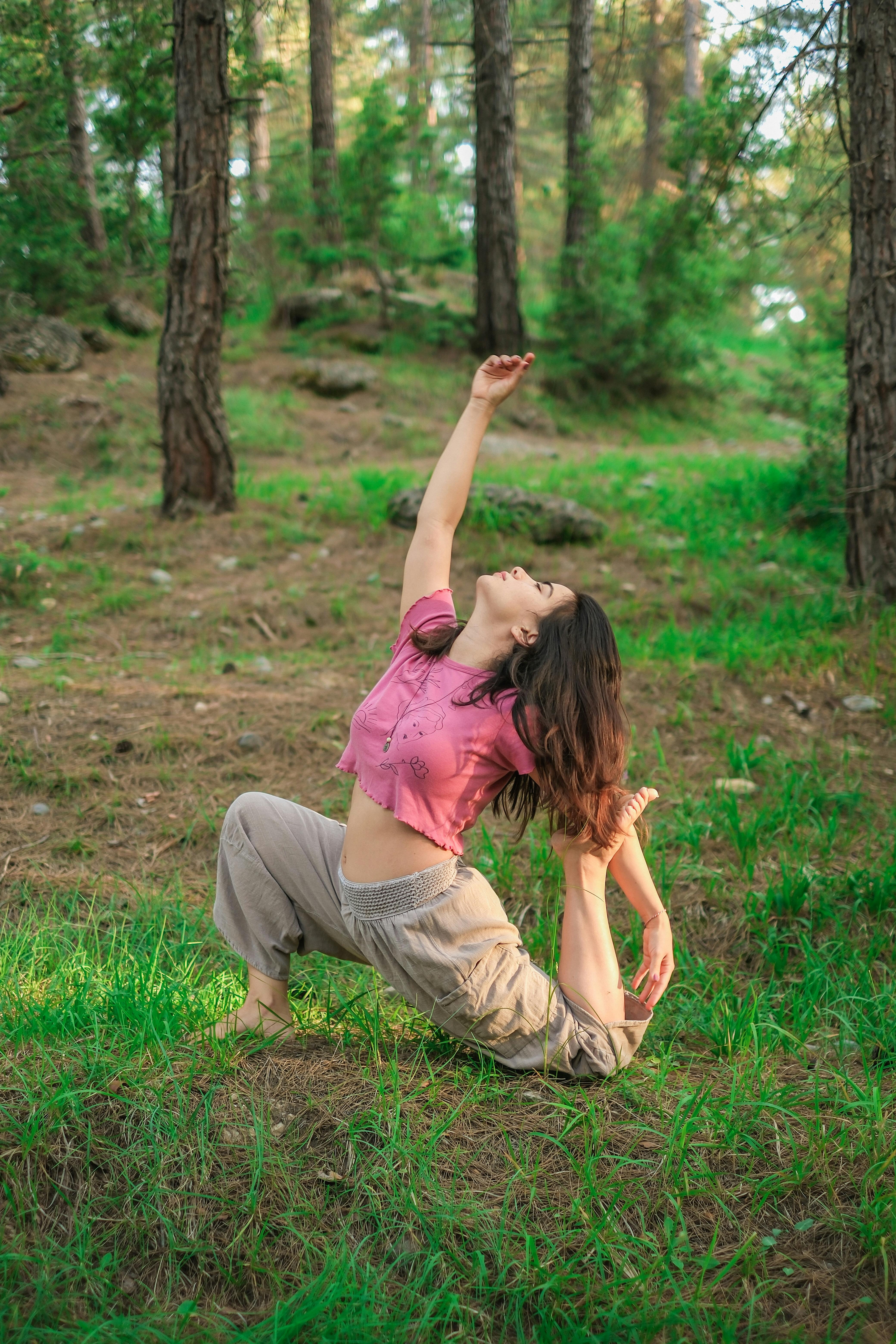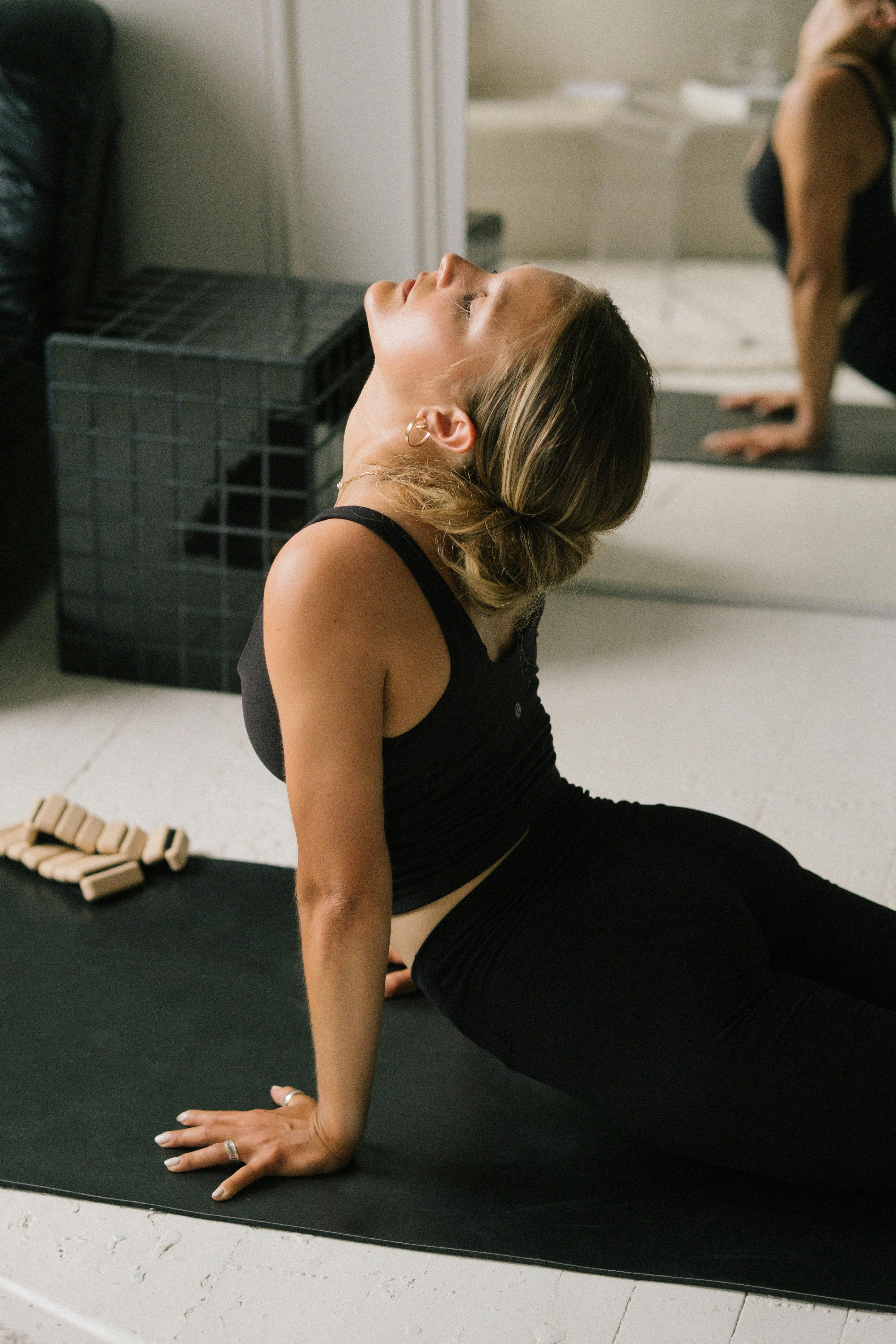So you’ve heard about yoga, but what exactly is it? Well, yoga is a centuries-old practice that combines physical poses, breathing exercises, and meditation to promote overall well-being. It originated in ancient India and has since gained popularity worldwide for its many benefits, such as reducing stress, improving flexibility, and enhancing mental clarity. Whether you’re a beginner or an experienced yogi, incorporating yoga into your daily routine can be a great way to take care of your body and mind.

What is Yoga?
Yoga is a ancient practice that originated in India thousands of years ago. It is a holistic approach to well-being that encompasses physical, mental, emotional, and spiritual aspects of life. The word “yoga” itself means “union” or “to join” in Sanskrit, and it refers to the union of the body, mind, and soul. This practice involves various physical postures, breathing exercises, meditation, and ethical principles to promote overall health and inner peace.
Origin of Yoga
The origins of yoga can be traced back to ancient India, where it was developed by the Indus Valley Civilization around 3000 BCE. However, yoga as we know it today was codified and systematized by the sage Patanjali in the Yoga Sutras, written around 200 CE. Patanjali’s Yoga Sutras serve as the philosophical foundation of yoga and outline the eight limbs of yoga, which are guidelines for living a yogic life.
Definition of Yoga
Yoga can be defined as a practice that combines physical postures (asanas), breathing exercises (pranayama), meditation (dhyana), and ethical principles (yamas and niyamas) to promote physical, mental, emotional, and spiritual well-being. It is a holistic approach to health and wellness that aims to create harmony and balance within oneself and with the world around us.
Types of Yoga
There are various types of yoga, each with its own focus and approach. Here are some of the most popular styles of yoga:
Hatha Yoga
Hatha yoga is the most widely practiced style of yoga and is a gentle, beginner-friendly form of yoga. It focuses on physical postures and breath control to improve strength, flexibility, and balance. Hatha yoga classes typically include a combination of standing and seated poses, as well as relaxation and meditation.
Vinyasa Yoga
Vinyasa yoga is a dynamic and flowing style of yoga that synchronizes movement with breath. It involves transitioning seamlessly between poses, creating a smooth and continuous flow. Vinyasa classes are often energetic and can be physically challenging, as they incorporate strength, flexibility, and cardiovascular conditioning.
Ashtanga Yoga
Ashtanga yoga is a rigorous and demanding style of yoga that follows a set sequence of poses. It emphasizes strength, flexibility, and endurance and is often physically challenging. Ashtanga classes typically include a series of sun salutations, standing poses, seated poses, and inversions. It is recommended for those with some yoga experience.
Bikram Yoga
Bikram yoga, also known as hot yoga, is practiced in a heated room (usually around 105°F) with high humidity. It consists of a specific sequence of 26 poses and two breathing exercises, which are performed in the same order in every class. Bikram yoga aims to promote flexibility, detoxification, and mental clarity.
Kundalini Yoga
Kundalini yoga focuses on awakening the dormant energy within the body and activating the Kundalini energy at the base of the spine. It involves a combination of physical postures, breathwork, chanting, and meditation. Kundalini classes often include repetitive movements, dynamic breathwork, and mantra chanting.
Iyengar Yoga
Iyengar yoga emphasizes alignment, precision, and the use of props to support correct posture. It was developed by B.K.S. Iyengar and focuses on holding poses for an extended period to build strength and flexibility. Iyengar classes often include the use of props such as blocks, straps, and bolsters to assist in the practice of poses.
Restorative Yoga
Restorative yoga is a gentle and relaxing form of yoga that uses props to support the body in various poses. It aims to release tension and promote deep relaxation and stress relief. Restorative classes often include long-held poses and focus on deep breathing and mindfulness.
Yin Yoga
Yin yoga is a slow-paced style of yoga that involves holding poses for an extended period (usually three to five minutes). It targets the connective tissues, such as ligaments, tendons, and fascia, to increase flexibility and improve joint mobility. Yin classes often involve passive stretching and focus on relaxation and breath awareness.
Power Yoga
Power yoga is a vigorous and dynamic style of yoga that is physically challenging and focuses on strength and flexibility. It is inspired by Ashtanga yoga but does not follow a set sequence of poses. Power yoga classes typically include flowing movements, strength-building exercises, and breath control.
Benefits of Yoga
Yoga offers a wide range of benefits for both the body and mind. Here are some of the key benefits of practicing yoga:
Physical Benefits
- Improved flexibility and range of motion
- Increased strength and muscle tone
- Better posture and alignment
- Enhanced cardiovascular health
- Boosted immune system
- Improved balance and coordination
- Reduced risk of injury and improved athletic performance
Mental Benefits
- Stress relief and relaxation
- Improved focus and concentration
- Enhanced mental clarity and memory
- Reduced anxiety and depression
- Elevated mood and sense of well-being
- Better sleep quality and insomnia relief
Emotional Benefits
- Increased self-awareness and self-acceptance
- Improved emotional stability and resilience
- Reduced anger and irritability
- Enhanced confidence and self-esteem
- Cultivation of gratitude and compassion
- Better management of emotions and reactions
Spiritual Benefits
- Deepened sense of connectedness and unity
- Heightened sense of purpose and meaning
- Increased mindfulness and presence in the moment
- Expanded consciousness and self-transcendence
- Cultivation of inner peace and contentment
- Alignment with one’s true self and higher power
How to Get Started with Yoga
If you’re new to yoga and want to get started, here are some steps to help you begin your journey:
Choosing a Yoga Style
Consider your goals, preferences, and fitness level when choosing a yoga style. If you’re looking for a gentle and beginner-friendly practice, Hatha or Vinyasa yoga may be suitable for you. If you prefer a more physically challenging and dynamic practice, Ashtanga or Power yoga could be a good choice. Research different styles and try out different classes to find the one that resonates with you.
Finding a Qualified Instructor
It’s important to learn yoga from a qualified and experienced instructor who can guide you safely and effectively. Look for instructors who have completed a reputable yoga teacher training program and have been teaching for a significant period. Read reviews and ask for recommendations from friends or local yoga communities to find a qualified instructor in your area.
Purchasing Yoga Equipment
To practice yoga, you’ll need some basic equipment such as a yoga mat, yoga blocks, and a yoga strap. A yoga mat provides cushioning and traction for your practice, while blocks and straps help with alignment and modifications of poses. You can find these items at sporting goods stores, online retailers, or specialty yoga shops.
Setting Up a Home Practice Area
If you prefer to practice yoga at home, designate a quiet and comfortable space for your practice. Clear the area of any clutter and create a calming atmosphere with dim lighting, soothing music, or aromatherapy. Keep your yoga mat, props, and any other accessories in the designated area for easy access. Consider creating a daily or weekly schedule for your home practice to establish consistency.

Yoga Poses and Techniques
Yoga poses, also known as asanas, are physical postures that help develop strength, flexibility, and balance. Here are some basic yoga poses that are commonly practiced:
Basic Yoga Poses
- Mountain Pose (Tadasana): Stand tall with your feet together and arms relaxed by your sides.
- Downward Facing Dog (Adho Mukha Svanasana): Begin on your hands and knees, then lift your hips up and back, creating an inverted “V” shape with your body.
- Warrior I (Virabhadrasana I): Step one foot forward into a lunge position, with your front knee bent and arms extended overhead.
- Tree Pose (Vrksasana): Stand on one leg and place the sole of the other foot against your inner thigh. Bring your hands together at your heart center.
- Child’s Pose (Balasana): Kneel on the floor, then sit back on your heels and fold your torso forward, resting your forehead on the mat.
Breathing Techniques
Breathing techniques, or pranayama, are an integral part of yoga practice. Here are a few common breathing techniques:
- Ujjayi Breath: Breathe in and out through your nose, constricting the back of your throat slightly to create a gentle ocean-like sound.
- Nadi Shodhana (Alternate Nostril Breathing): Close your right nostril with your right thumb and inhale through the left nostril. Then close the left nostril with your ring finger and exhale through the right nostril. Continue this alternate nostril breathing pattern.
Meditation
Meditation is a practice of focusing your mind and cultivating a sense of calm and inner peace. Here’s a simple meditation technique to try:
- Sit comfortably in a cross-legged position or on a chair, with your spine straight and shoulders relaxed.
- Close your eyes and bring your attention to your breath. Notice the sensation of your breath as you inhale and exhale.
- If your mind starts to wander, gently bring your attention back to your breath. Observe any thoughts or sensations without judgment and let them pass.
Chanting
Chanting, or mantra repetition, is a practice of repeating sacred sounds or phrases to calm the mind and uplift the spirit. Here’s a simple chant to try:
- Sit comfortably and take a few deep breaths to center yourself.
- Choose a mantra or sacred sound that resonates with you, such as “Om” or “Om Namah Shivaya.”
- Repeat the mantra aloud or silently, focusing on the sound and vibration it creates in your body.
Yoga Props and Accessories
Yoga props and accessories can enhance your practice and provide support and stability in poses. Here are some commonly used yoga props:
Yoga Mat
A yoga mat provides cushioning and grip for your practice, preventing slipping and providing comfort. Look for a mat that is thick enough to support your joints but not too slippery. Choose a mat made of eco-friendly materials, such as natural rubber or PVC-free foam.
Yoga Blocks
Yoga blocks are foam or cork blocks used to support the body in poses, especially for those with limited flexibility or range of motion. Blocks can be placed under the hands, feet, or hips to provide stability and extension in poses.
Yoga Strap
A yoga strap is a long, adjustable strap made of cotton or nylon that assists in stretching and reaching poses. It is particularly helpful in poses that require a deep stretch or in poses where you cannot reach the full expression.
Yoga Bolster
A yoga bolster is a firm, rectangular cushion used for support and relaxation in restorative poses. It provides gentle elevation and comfort, allowing the body to relax and release tension.
Yoga Blanket
A yoga blanket is a versatile prop that can be folded or rolled to provide support, cushioning, or warmth during practice. It can be used as padding under knees or hips, as a bolster substitute, or for added comfort and relaxation during restorative poses.

Yoga Etiquette and Practices
While practicing yoga, it is important to observe certain etiquette and practices to create a respectful and harmonious environment. Here are some guidelines to keep in mind:
Respecting Personal Space
When practicing yoga, be mindful and respectful of other students’ personal space. Allow enough room for everyone to move and stretch comfortably without bumping into each other. Avoid stepping on other people’s mats and be conscious of your movements to avoid disrupting others.
Arriving on Time
Arrive at the yoga class or studio on time to avoid disrupting the flow of the class. Late arrivals can be distracting to both the teacher and other students. If you must arrive late, enter the room quietly and set up your mat with minimal disturbance.
Silencing Mobile Devices
Before entering the yoga class or studio, make sure to silence your mobile devices to avoid disruptions. The use of mobile phones during class is generally discouraged to maintain a focused and peaceful atmosphere.
Being Mindful of Personal Hygiene
Maintain good personal hygiene when practicing yoga to create a pleasant environment for yourself and others. Wear clean, comfortable clothing and avoid strong perfumes or lotions that may cause discomfort to others. It is also advisable to bring a towel to wipe away sweat during a vigorous practice.
Yoga for Specific Health Conditions
Yoga can be beneficial for a variety of health conditions and concerns. Here are some ways yoga can help:
Yoga for Stress Relief
Yoga is known for its ability to reduce stress and promote relaxation. Through physical movement, breathwork, and meditation, yoga helps activate the body’s relaxation response, lowering stress hormones and inducing a sense of calm and well-being.
Yoga for Back Pain
Yoga can help alleviate back pain by improving posture, strengthening the core muscles, and increasing flexibility and mobility in the spine. Gentle stretching and targeted poses can relieve tension and promote proper alignment to reduce back pain.
Yoga for Anxiety and Depression
The mindfulness and breathwork techniques in yoga can help alleviate symptoms of anxiety and depression. Yoga promotes self-awareness, increases serotonin levels, and calms the nervous system, helping individuals manage their emotions and improve their mental well-being.
Yoga for Weight Loss
While yoga alone might not lead to significant weight loss, it can be an effective complement to a balanced diet and regular exercise routine. The physical postures, combined with breath control and mindful eating practices, can help individuals develop a healthier relationship with their bodies and make better food choices.
Yoga Retreats and Workshops
Yoga retreats and workshops offer a unique opportunity for individuals to deepen their yoga practice and immerse themselves in a supportive and nurturing environment. Here’s why you might consider attending a yoga retreat or workshop:
Benefits of Yoga Retreats
Yoga retreats provide an opportunity to step away from the demands of daily life and focus solely on your practice. They offer a break from routine, a chance to connect with like-minded individuals, and an opportunity to explore new yoga styles and deepen your understanding of yoga philosophy.
Finding the Right Yoga Retreat
When choosing a yoga retreat, consider factors such as location, duration, style of yoga, and the expertise of the instructors. Research different retreats, read reviews, and ask for recommendations to find the one that aligns with your goals and preferences.
What to Expect at a Yoga Workshop
Yoga workshops are typically shorter in duration than retreats and focus on specific aspects of yoga practice or philosophy. They may include in-depth instruction on specific poses, meditation techniques, or discussions on yoga philosophy. Workshops provide an opportunity to learn from experienced teachers and explore new aspects of your practice.
Yoga Philosophy and Lifestyle
Yoga is not just a physical practice; it is a holistic philosophy and way of life. Here are some key aspects of yoga philosophy and how to incorporate yoga into your daily life:
The Eight Limbs of Yoga
Patanjali’s Yoga Sutras outline the eight limbs of yoga, which serve as a path to self-realization and liberation. The eight limbs include moral principles (yamas and niyamas), physical postures (asanas), breath control (pranayama), sense withdrawal (pratyahara), concentration (dharana), meditation (dhyana), and self-realization (samadhi).
Yoga Ethics and Values
Yoga also encompasses ethical principles and values that guide practitioners in their interactions with themselves and others. The yamas (restraints) and niyamas (observances) outline principles such as non-violence, truthfulness, contentment, self-discipline, and self-study. Adopting these ethical guidelines can help cultivate a more compassionate and mindful approach to life.
Incorporating Yoga into Daily Life
Yoga is not limited to the time spent on the mat; it can be incorporated into daily life off the mat as well. Practicing mindfulness, deep breathing, and gratitude throughout the day can help cultivate a sense of presence and connection. Applying the principles of yoga, such as compassion, non-judgment, and self-reflection, can enhance relationships and create a more balanced and harmonious life.
In conclusion, yoga is a holistic practice that offers numerous physical, mental, emotional, and spiritual benefits. With various styles to choose from, finding the right type of yoga for your needs and goals is essential. Whether you’re a beginner or an experienced practitioner, yoga can be incorporated into your daily life to promote overall well-being and inner peace. So take the first step, find a qualified instructor, and embark on your journey to discover the transformative power of yoga.
